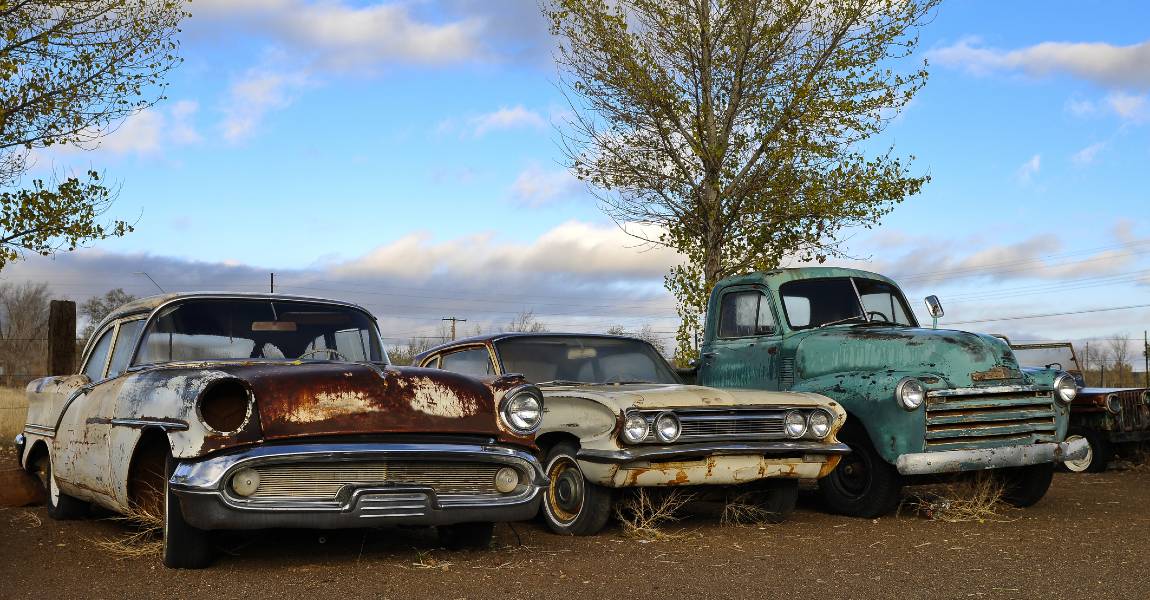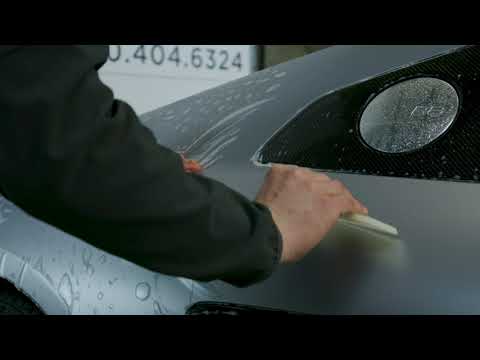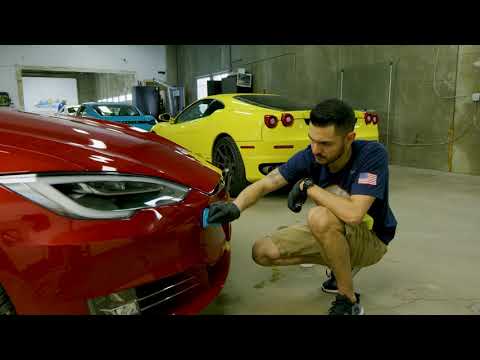Ceramic coating is a popular protective coating for vehicles that offers numerous benefits, especially during winter. What are the Benefits of Ceramic Coating for Your Vehicle in Winter?
Ceramic coating for your vehicle in winter provides numerous benefits, including enhanced protection against harsh weather conditions and increased durability against road salt, ice, and snow. It also helps to maintain the appearance and shine of your car, making it easier to clean and preserving its value during the winter months.
From providing a strong barrier against harsh weather conditions to enhancing the overall appearance, ceramic coating ensures your vehicle stays protected and looks its best even in the toughest winter conditions.
Table of Contents
- What is a Ceramic Coating for a Vehicle?
- Benefits of Ceramic Coating for Your Car in Winter
- Layer of Protection
- Salt and Road Grime
- Hydrophobic Properties
- Rust and Corrosion
- UV Damage and Acid Rain
- Washing Your Car in Winter
- Traditional Waxes vs Ceramic Coatings
- Curing Process and Chemical Bond Formation
- Extra Layer of Protection Against Bird Droppings
- Cost Benefit Analysis for Vehicle Owner
- Finding the Right Ceramic Coating Service Provider
- Conclusion

What is a Ceramic Coating for a Vehicle?
A ceramic car coating is a liquid polymer that is applied by hand to the exterior of a vehicle. Once applied, it chemically bonds with the vehicle’s factory paint, creating a protective layer. This layer creates a hydrophobic surface that repels water, dirt, and debris, making the vehicle easier to clean and maintain.
The ceramic coatings provide amazing gloss and shine, enhancing the vehicle’s overall appearance. With proper maintenance, a ceramic coating can last for several years, offering long-term protection against environmental elements and UV rays. This makes it popular for car enthusiasts and owners looking to preserve and protect their vehicle’s paint.
Benefits of Ceramic Coating for Your Car in Winter
During the winter months, harsh weather conditions can take a toll on your vehicle’s exterior. This is where a ceramic coating comes in to provide much-needed protection. The benefits of ceramic coating during cold weather are numerous.
- It creates a strong barrier against dirt, salt, and other contaminants that can easily build up on your vehicle’s surface during winter. This barrier not only keeps your vehicle looking clean and sleek but also prevents these substances from causing damage to the paint.
- The hydrophobic properties of ceramic coating make washing your vehicle much easier, as water and debris simply bead off the surface, reducing the need for harsh scrubbing. This also helps to maintain the glossy appearance of your vehicle’s paint.
- A ceramic coating helps to prevent rusting and fading, which are common issues during the winter due to increased exposure to moisture and UV rays.
The ceramic coating provides excellent protection for your vehicle during winter by creating a durable shield against dirt, salt, and contaminants, making washing easier, and preventing rusting and fading. Consider applying a ceramic coating to your vehicle to ensure it stays in top condition throughout the winter.
Layer of Protection
During the harsh winter weather, vehicles are exposed to various environmental elements that can affect their appearance and performance.
One effective way to maintain the integrity of your vehicle during the winter season is to apply a ceramic coating. This innovative long-lasting layer of protection provides numerous benefits that can help shield your vehicle from the damaging effects of snow, ice, salt, and other winter-related hazards.
From enhancing the paint’s longevity to making it easier to clean off road salt and grime, ceramic coating offers a reliable defense against the harsh winter conditions. Read on to discover the specific benefits of ceramic coating for your vehicle in winter.
Salt and Road Grime
During the winter months, road salt and grime can cause significant damage to your car. Consider applying a ceramic coating to protect your vehicle from these corrosive elements. This protective layer creates a barrier between your car’s surfaces and the salt, preventing it from causing damage.
Road salt is highly corrosive and can negatively impact various car components. It can lead to rust and corrosion in the gas lines, exhaust system, and other metal components. It can also wear down the clear coat and paint, leading to unsightly and costly damage.
Investing in a ceramic coating for winter car maintenance is essential to preserve your car and prevent these corrosive effects. Doing so ensures that your car remains in good condition and looks its best despite the harsh winter conditions. With the right protection, you can enjoy peace of mind knowing that your vehicle is shielded from the damaging effects of road salt and grime.
Hydrophobic Properties
Hydrophobic materials are characterized by their ability to repel water due to their non-polar nature. This means they do not have an affinity for water molecules, causing them to bead up and roll off the material’s surface. This property makes hydrophobic materials incredibly useful for applications like waterproofing and oil-repelling.
For example, in winter conditions, hydrophobic materials can benefit your car by repelling water, preventing ice build-up, and protecting the surface from corrosion.
Common examples of hydrophobic materials include Teflon, wax, and certain plastics. Teflon, for instance, is well known for its water-repellent properties and is commonly used in non-stick cookware.
Wax is another hydrophobic material often used for waterproofing and protecting surfaces such as wood and leather.
Certain plastics, such as polyethylene and polypropylene, are also naturally hydrophobic, making them ideal for applications where water repellency is necessary.
The non-polar nature of hydrophobic materials allows them to repel water, making them valuable for a wide range of practical applications such as waterproofing and oil-repelling.

Rust and Corrosion
During the winter, it’s important to take steps to prevent rust and corrosion on your vehicle, especially in areas with harsh conditions such as freeze-and-thaw cycles. These cycles can cause water to seep into metal surfaces, accelerating the corrosion process.
Consider applying a protective coating to vulnerable areas like the undercarriage and exposed metal surfaces to protect your car. This will create a barrier against moisture and salt, reducing the risk of rust.
Regularly inspecting and maintaining your car’s undercarriage and exposed metal areas is also crucial. This includes washing your car regularly to remove salt and road grime, as well as checking for any signs of rust. If you notice any areas with chipped or scratched paint, it’s important to touch up these spots to prevent moisture from reaching the metal.
Overall, rust prevention during the winter requires proactive care and maintenance. By applying protective coatings, regularly inspecting your vehicle, and addressing any areas of concern, you can minimize the risk of rust and corrosion, ultimately prolonging the life of your car.
UV Damage and Acid Rain
UV damage on car paint surfaces occurs when the sun’s ultraviolet rays cause the paint to degrade and discolor over time. The UV rays break down the chemical bonds in the paint, leading to fading, chalking, and loss of gloss. This can result in a dull and weathered appearance of the car’s paint.
To prevent UV damage, regular waxing, polishing, and using a UV protective sealant can help mitigate the effects of sunlight exposure.
Acid rain can have detrimental effects on various materials. It can accelerate the deterioration of car paint, leading to corrosion and pitting. In metals, it can cause rust, corrosion, and acid rain spots.
To mitigate the effects of acid rain, regular washing and waxing of the car can help protect the paint job. Applying a protective ceramic car coating on metals and using sealants on clean surfaces can help prevent damage from acid rain.
During colder months and cold weather conditions, protecting vehicles and surfaces from UV damage and acid rain is crucial by using protective coatings and regular automotive maintenance practices. These preventative measures can help extend the lifespan of a car’s exterior paint and other materials exposed to the elements.
Washing Your Car in Winter
Winter can be harsh on your car’s bodywork, with road salt, sand, and snow causing potential paint damage to your vehicle’s original paint job. Regular car washing during winter is essential, especially if your car has a ceramic coating.
Ceramic coatings provide a protective layer that can help prevent damage from road salt and other contaminants. Regular washing is still crucial to maintain the coating’s effectiveness and the overall appearance of your vehicle.
Ceramic coatings are known for their hydrophobic properties, repelling water and making cleaning easier and more effective. This is particularly beneficial in winter conditions, as snow and ice will slide off more easily, reducing the need for vigorous cleaning that could potentially damage the paint.
To keep your car clean and protected during the winter, it is recommended to wash your car every two weeks or more frequently if it is heavily soiled. Use a pH-neutral shampoo and a soft microfiber wash mitt to avoid scratching the ceramic coating. Consider investing in an advanced coating cleaner designed for added protection for ceramic coatings.
Regular car washing during winter is essential to maintain a ceramic coating and protect your vehicle’s bodywork. With the hydrophobic properties of ceramic coatings, cleaning is made easier, and the frequency and washing methods are essential for keeping your car clean and protected.
Traditional Waxes vs Ceramic Coatings
When comparing traditional waxes and ceramic coatings for a car’s exterior, there are notable differences in durability, protective measures, and final effects.
- Traditional waxes provide a glossy finish but are not as durable as ceramic coatings.
- Ceramic coatings offer longer-lasting protection against environmental elements such as UV rays, oxidation, and winter weather. They provide better durability and higher protection for the car’s exterior.
Ceramic coatings have the advantage of UV protection, which helps prevent paint fading and damage caused by the sun. They also offer superior oxidation prevention, keeping the car’s exterior looking newer for longer.
In contrast, traditional waxes do not provide the same level of protection and may require more frequent reapplication to maintain their effectiveness.
Ceramic coatings outperform standard waxes in terms of durability and protective measures. They provide a longer-lasting and more effective shield for a car’s exterior, making them a preferred choice for those looking to keep their vehicle looking its best for longer.
Curing Process and Chemical Bond Formation
In the curing process, chemical bond formation occurs due to the reaction that occurs when certain materials are combined and subjected to specific conditions.
The key factors influencing this process include:
- temperature
- pressure
- catalysts
Temperature is crucial as it affects the curing reaction rate, with higher temperatures often leading to faster bond formation.
Pressure can also influence the curing process by affecting the density and strength of the resulting material.
Catalysts, on the other hand, are substances that can speed up the curing reaction without being consumed in the process.
Chemical bonds are formed during the curing process through various mechanisms, such as covalent bonds, ionic bonds, and hydrogen bonds.
These diverse types of bonds play a crucial role in determining the properties of the cured material.

Extra Layer of Protection Against Bird Droppings
To apply an extra layer of protection against bird droppings and other hazards, consider using Ceramic Pro Ceramic Coatings. This process involves applying a specialized ceramic coating to create a barrier that repels bird droppings, road salts, and other corrosive chemicals, safeguarding your vehicle’s paint and finish throughout the winter season.
- First, thoroughly clean the surface of your vehicle to remove any dirt, grime, or contaminants.
- Next, apply the ceramic coating using a microfiber applicator pad, working in small sections to ensure even coverage.
- After application, allow the coating to cure for the specified time, typically around 24 hours.
Once cured, the ceramic coating will create a protective layer that repels bird droppings, making it easier to clean and preventing damage to the paint. It will protect against road salts and other corrosive chemicals that can affect your vehicle’s finish during the winter months.
By applying Ceramic Pro Ceramic Coatings, you can ensure that your vehicle’s paint and finish are safeguarded against bird droppings and other hazards, providing added protection throughout the winter season.
Cost Benefit Analysis for Vehicle Owner
Ceramic coatings offer a higher upfront cost compared to traditional waxes or sealants. Still, the long-term cost savings and reduced maintenance costs make it a cost-effective choice for vehicle owners.
While traditional waxes or sealants must be reapplied every few months, ceramic coatings can last several years with minimal maintenance. This means less money spent on purchasing and applying products and less time and effort required for maintenance.
In cold weather, ceramic coatings provide excellent protection against harsh elements, including road salts, snow, and ice. This helps prevent damage to the vehicle’s paint and preserves its aesthetics throughout the year. With the added protection, the vehicle’s value is also preserved as it maintains its appearance and condition.
Overall, the cost-benefit analysis for vehicle owners considering ceramic coatings is clear – the initial investment pays off in long-term cost savings and reduced maintenance costs while also providing superior protection and preservation of the vehicle’s value.
Finding the Right Ceramic Coating Service Provider
If you’re looking for a reliable ceramic coating service provider near you, it can be overwhelming to sort through all the options.
Whether seeking protection for your vehicle with ceramic coating, finding a provider that offers quality products and exceptional service is important.
The key factors to consider when choosing a ceramic coating service provider include location, reputation, experience, and customer reviews.
Whether in a major city or a more rural area, finding the right ceramic coating service provider to meet your needs is essential for a successful and satisfying experience.
Expertise and Knowledge about Different Brands and Types of Coatings
There are several brands and types of ceramic coatings for cars, each with specific features, benefits, and drawbacks. Some popular brands include Gtechniq, CarPro, and Feynlab.
These coatings offer superior durability, with some lasting up to 2-5 years and high resistance to high temperatures and humidity. They provide excellent protection against UV rays, chemicals, and environmental contaminants, making them suitable for daily use.
Regarding drawbacks, some ceramic coatings may require a professional application and can be more expensive than traditional wax or sealants.
Regarding winter protection, ceramic coatings like Gtechniq Crystal Serum Ultra and CarPro Cquartz UK Edition are known for their ability to withstand harsh winter conditions, providing a strong barrier against road salt, snow, and ice. These coatings ensure that the car’s paint is well protected and easier to clean during winter, making them ideal for cold climates.
Conclusion
In conclusion, ceramic coating for your vehicle in winter offers numerous benefits. It provides a protective layer that shields your car’s exterior from harsh weather conditions, such as snow, ice, and road salt. This coating helps prevent damage, corrosion, and fading, keeping your car looking new and maintaining its value.
A ceramic coating makes cleaning your vehicle easier and provides a long-lasting shine. Don’t wait; protect your car this winter with ceramic coating and ensure its beauty and durability. Schedule your ceramic coating appointment today!




